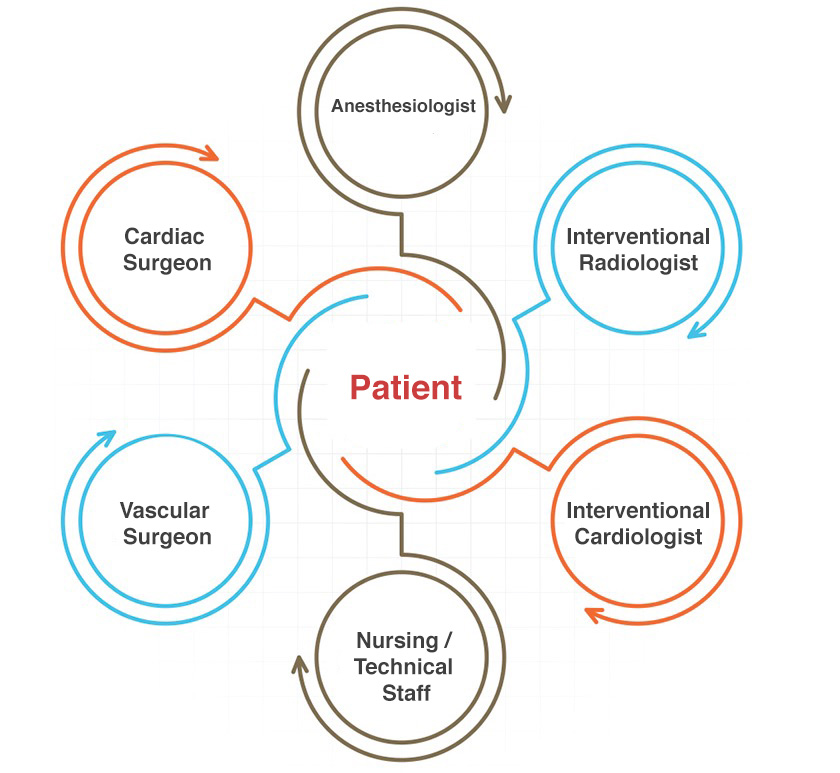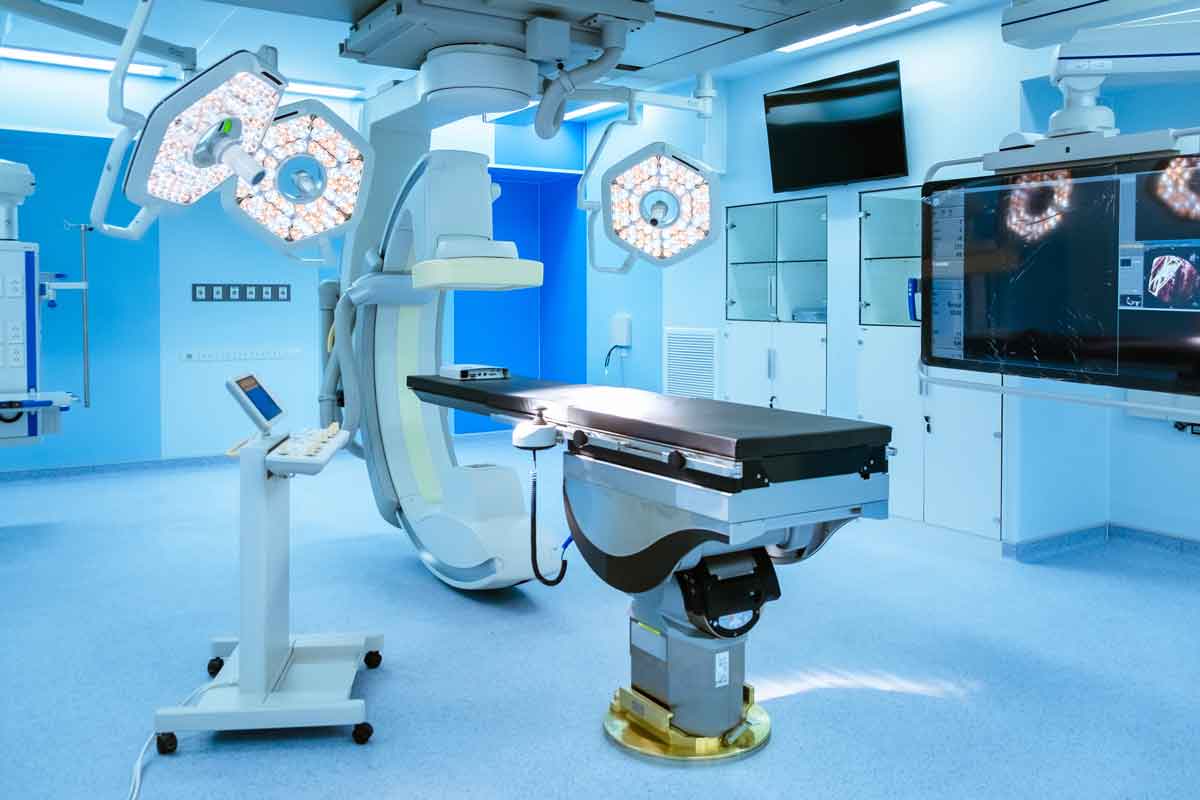

It’s Time To Think Differently About Advanced Aortic Repair
In the modern era of complex aortic care, no single specialty can claim ownership over the treatment of life-threatening conditions such as thoracoabdominal aneurysms, aortic dissections, penetrating ulcers, or traumatic injuries. The evolution of endovascular therapies—while minimally invasive in technique—has increased the need for coordination, rather than reduced it. At the center of every successful case is not just a skilled operator—but a fully aligned, multidisciplinary team working together in synchrony.
The Patient Is Always Central
As shown in the diagram above, the patient lies at the heart of the care pathway, surrounded by a diverse ring of specialists. This is not symbolic—it reflects the actual clinical, anatomical, and logistical complexity of treating aortic disease. No successful endovascular aortic arch or thoracoabdominal repair can occur without deep interdependency between medical and technical disciplines.

Essential for understanding open surgical bailout strategies, prior arch surgeries, or managing ascending aortic involvement. Their role is also critical in hybrid approaches (e.g., debranching, sternotomy standby).
Leads most descending, abdominal, or iliac-focused endovascular interventions and handles challenging access, vessel manipulation, and long-term follow-up.
Plays a vital role in preoperative CTA planning, device navigation, and handling tortuous anatomy or complex angulation. Brings a strong image-based mindset to procedural planning.
Particularly useful when arch pathology overlaps with structural heart disease or in patients with prior TAVR/valve procedures. Skilled in transcatheter wire navigation and endograft delivery.
Manages hemodynamic stability, cerebral perfusion, and spinal cord protection. Their role is critical during rapid pacing, hypotension protocols, and neuro-monitoring.
Maintains sterile field, manages inventory, assists with device preparation, monitors vitals, and ensures seamless intraoperative transitions. Familiarity with device systems is key.
Among this ring of physicians and nurses, one role stands apart yet is equally indispensable: the certified clinical specialist—a technically trained, industry-supported expert with deep device knowledge.
It is vital that institutions only work with certified clinical specialists who have undergone formal product training, maintain up-to-date competency records, and have clinical experience in real-world procedures.
Several studies and guidelines—from ESVS to SVS and AHA/ACC—consistently recommend a team-based approach for complex endovascular repairs. The reasons are clear:
At Aortic Academy, we believe that the most advanced procedures demand the most integrated teams. A device is only as good as the hands that deploy it—and those hands are steadier when surrounded by the right people.
Whether you’re a hospital building your first complex aortic team, or a seasoned operator looking to improve outcomes, remember: your success doesn’t just lie in a guidewire—it lies in the strength of your team.
Want to train your team in multidisciplinary case planning, imaging alignment, or disease-specific device selection? Contact us to explore structured training modules, faculty-led case reviews, and live procedural simulations tailored for collaborative teams.
The content provided in this article and throughout the Aortic Academy platform is intended for educational and informational purposes only. It does not constitute medical advice, diagnosis, or treatment, nor is it intended to replace the clinical judgment of qualified healthcare professionals. All clinical decisions—especially those concerning patient care, procedural planning, or surgical interventions—must be made by board-certified and appropriately credentialed medical practitioners based on their own professional expertise, institutional protocols, and applicable regional regulations.
While every effort has been made to ensure the accuracy, currency, and relevance of the information presented, Aortic Academy makes no representations or warranties, express or implied, regarding the completeness, applicability, or clinical appropriateness of the content. We assume no responsibility or liability for any direct, indirect, incidental, or consequential harm, loss, or damage resulting from the use of any information or guidance provided herein.
Aortic Academy does not endorse any specific device, technology, or clinical approach mentioned unless explicitly stated, and any reference to commercial products or services is for educational illustration only. Readers are strongly encouraged to consult official guidelines, product IFUs, and institutional policies before implementing any technique or procedure discussed on this site.
Use of this website and its content constitutes agreement to these terms. For full legal terms, please refer to our Terms of Use and Privacy Policy.
© 2025 Aortic Academy. All content Copyrighted. All trademarks reserved.